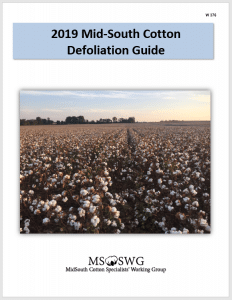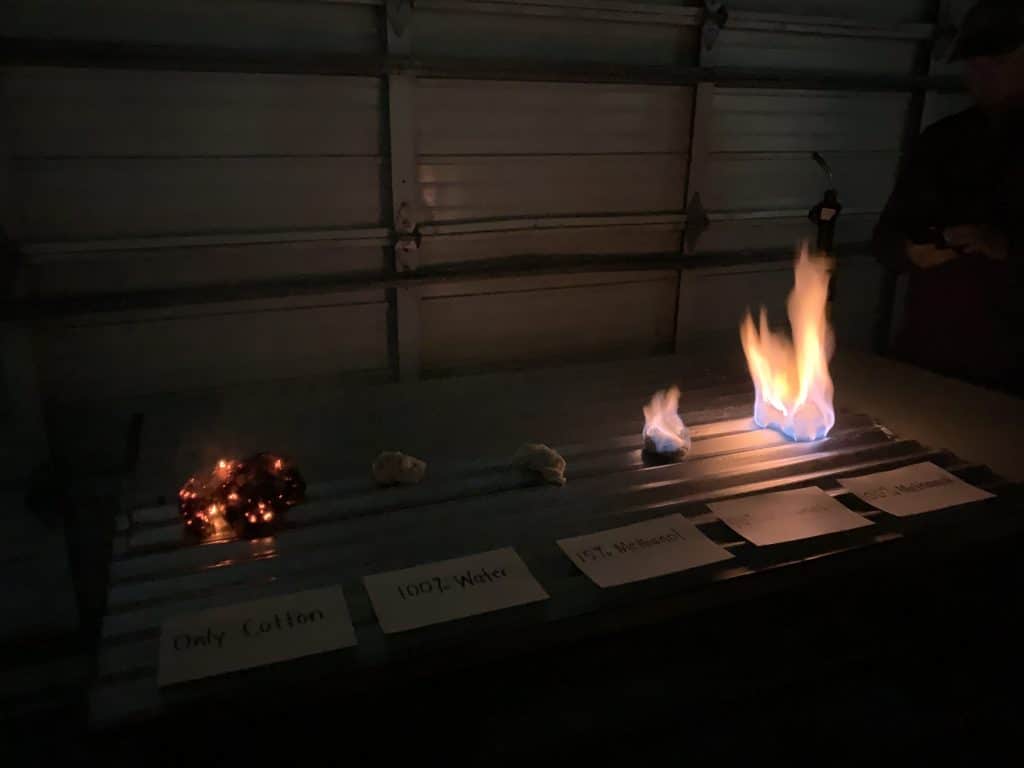 With the arctic blast in the forecast and the substantial number of cotton acres left in the field, several have recently asked about how to keep water in their cotton pickers moisture system from freezing. Some operators occasionally mix a small percentage of methanol with water to lower the freezing point of water, but extreme caution must be used with this liquid since it is highly flammable. This post includes a brief demonstration concerning methanol/water mixtures and freeze points of different mixtures. Please note prior to using methanol or any other liquid in your moisture system you should consult the manufacturer. Continue reading
With the arctic blast in the forecast and the substantial number of cotton acres left in the field, several have recently asked about how to keep water in their cotton pickers moisture system from freezing. Some operators occasionally mix a small percentage of methanol with water to lower the freezing point of water, but extreme caution must be used with this liquid since it is highly flammable. This post includes a brief demonstration concerning methanol/water mixtures and freeze points of different mixtures. Please note prior to using methanol or any other liquid in your moisture system you should consult the manufacturer. Continue reading
All posts by Tyson Raper, Cotton & Small Grains Specialist
Opening bolls immediately before a freeze
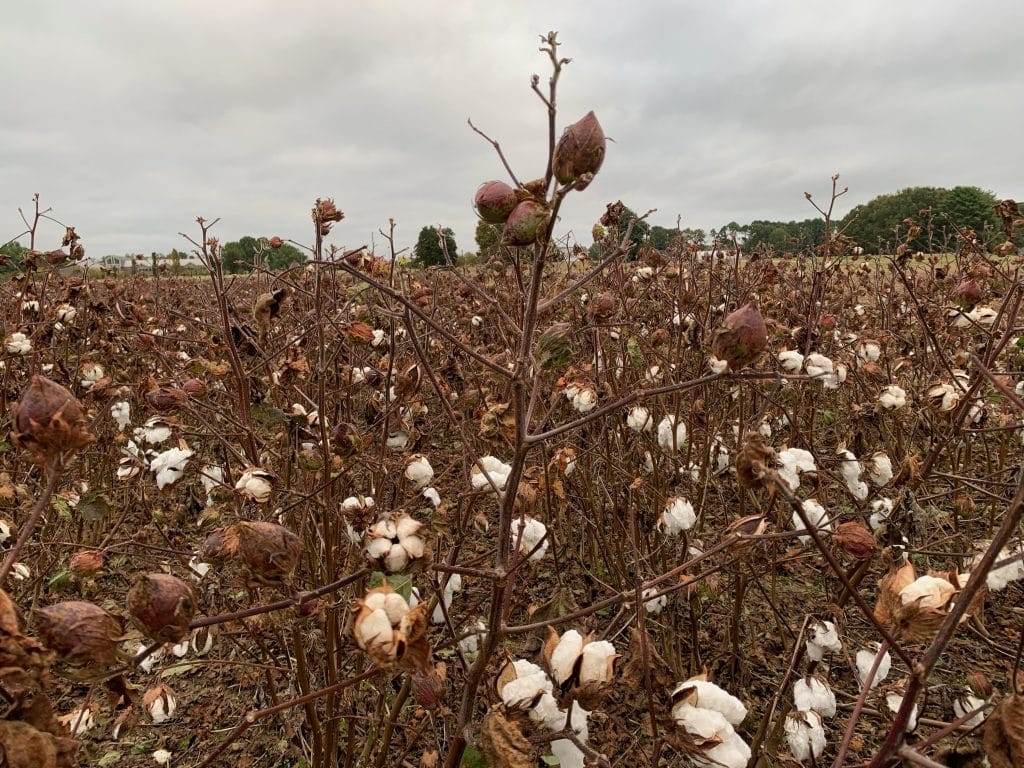 The forecast lows for Thursday/Friday/Saturday/Sunday nights have bounced around over the past few days, but this morning they included a 26, 28, 28 and 31. I’ve passed many fields with a large percentage of large bolls in the upper canopy still closed. Today (10/29) is the day to make any last-ditch effort at opening those bolls; it is likely all bolls remaining closed after this weekend will freeze shut. Continue reading
The forecast lows for Thursday/Friday/Saturday/Sunday nights have bounced around over the past few days, but this morning they included a 26, 28, 28 and 31. I’ve passed many fields with a large percentage of large bolls in the upper canopy still closed. Today (10/29) is the day to make any last-ditch effort at opening those bolls; it is likely all bolls remaining closed after this weekend will freeze shut. Continue reading
REMINDER: Cotton Tour TOMORROW, Wednesday Sept. 4th
 The West Tennessee Research and Education Center (WTREC) would like to cordially invite you to the 2019 University of Tennessee Cotton Tour. This event is scheduled for Wednesday, Sept. 4th at the WTREC (605 Airways Blvd., Jackson, TN 38301). Registration will begin at 8:00 a.m. with the tour departing at 8:30. The tour will end at noon with lunch. University of Tennessee Extension and Research personnel from across the state will be presenting on a wide range of topics including: fungicides and target spot, weed and resistance management, variety testing, defoliation, insect control, and drought mitigation, just to mention a few. Pesticide Re-certification and CCA points will be available.
The West Tennessee Research and Education Center (WTREC) would like to cordially invite you to the 2019 University of Tennessee Cotton Tour. This event is scheduled for Wednesday, Sept. 4th at the WTREC (605 Airways Blvd., Jackson, TN 38301). Registration will begin at 8:00 a.m. with the tour departing at 8:30. The tour will end at noon with lunch. University of Tennessee Extension and Research personnel from across the state will be presenting on a wide range of topics including: fungicides and target spot, weed and resistance management, variety testing, defoliation, insect control, and drought mitigation, just to mention a few. Pesticide Re-certification and CCA points will be available.
2019 Mid-South Cotton Defoliation Guide now available
The 2019 Mid-South Cotton Defoliation Guide is now available online. You can access the guide by clicking the above image or any of the embedded links within this post. This guide was compiled by Extension Specialists from throughout the Mid-South and is updated yearly.
2019 University of Tennessee Cotton Tour, Wednesday, Sept. 4th
 The West Tennessee Research and Education Center (WTREC) would like to cordially invite you to the 2019 University of Tennessee Cotton Tour. This event is scheduled for Wednesday, Sept. 4th at the WTREC (605 Airways Blvd., Jackson, TN 38301). Registration will begin at 8:00 a.m. with the tour departing at 8:30. The tour will end at noon with lunch. University of Tennessee Extension and Research personnel from across the state will be presenting on a wide range of topics including: fungicides and target spot, weed and resistance management, variety testing, defoliation, insect control, and drought mitigation, just to mention a few. Pesticide Re-certification and CCA points will be available. Continue reading
The West Tennessee Research and Education Center (WTREC) would like to cordially invite you to the 2019 University of Tennessee Cotton Tour. This event is scheduled for Wednesday, Sept. 4th at the WTREC (605 Airways Blvd., Jackson, TN 38301). Registration will begin at 8:00 a.m. with the tour departing at 8:30. The tour will end at noon with lunch. University of Tennessee Extension and Research personnel from across the state will be presenting on a wide range of topics including: fungicides and target spot, weed and resistance management, variety testing, defoliation, insect control, and drought mitigation, just to mention a few. Pesticide Re-certification and CCA points will be available. Continue reading
Estimating lint yield from boll counts
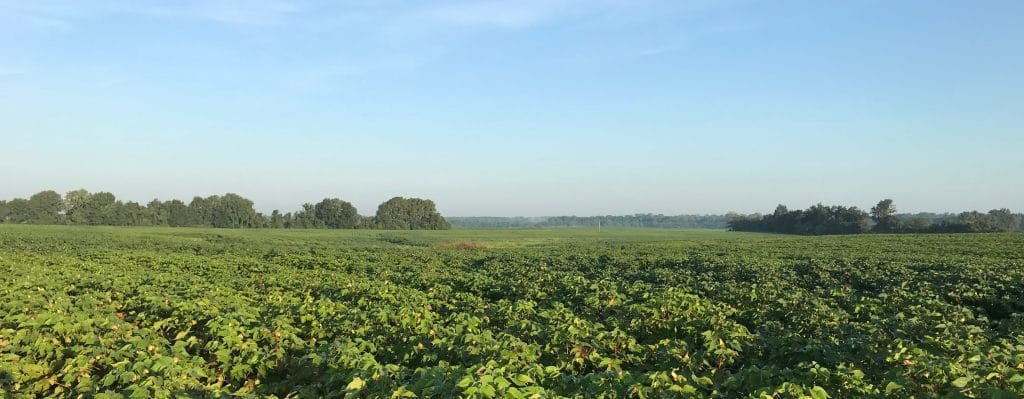 I’ve resisted writing this post for 5 years because I think estimating lint yield from boll counts only provides enough insight to differentiate between poor, decent and good cotton. Still, I understand the temptation to count one’s chickens before they hatch. In this blog, I highlight a few issues with estimates and define the number of bolls required to produce one and two bales at various row spacings and patterns. Continue reading
I’ve resisted writing this post for 5 years because I think estimating lint yield from boll counts only provides enough insight to differentiate between poor, decent and good cotton. Still, I understand the temptation to count one’s chickens before they hatch. In this blog, I highlight a few issues with estimates and define the number of bolls required to produce one and two bales at various row spacings and patterns. Continue reading
‘Impacts of the Trade War on the U.S. Cotton Sector’ by Dr. Andrew Muhammad and Dr. Aaron Smith
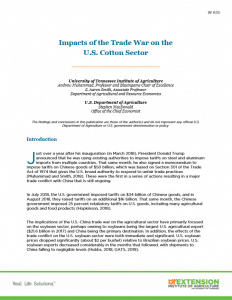 Dr. Andrew Muhammad and Dr. Aaron Smith published an Extension article earlier this week entitled “Impacts of the Trade War on the U.S. Cotton Sector.” I found the article to be extremely informative and while we typically focus on production issues, felt it was appropriate to share here. You can access the publication by clicking the image or following this hyperlink: https://extension.tennessee.edu/publications/Documents/W835.pdf
Dr. Andrew Muhammad and Dr. Aaron Smith published an Extension article earlier this week entitled “Impacts of the Trade War on the U.S. Cotton Sector.” I found the article to be extremely informative and while we typically focus on production issues, felt it was appropriate to share here. You can access the publication by clicking the image or following this hyperlink: https://extension.tennessee.edu/publications/Documents/W835.pdf


